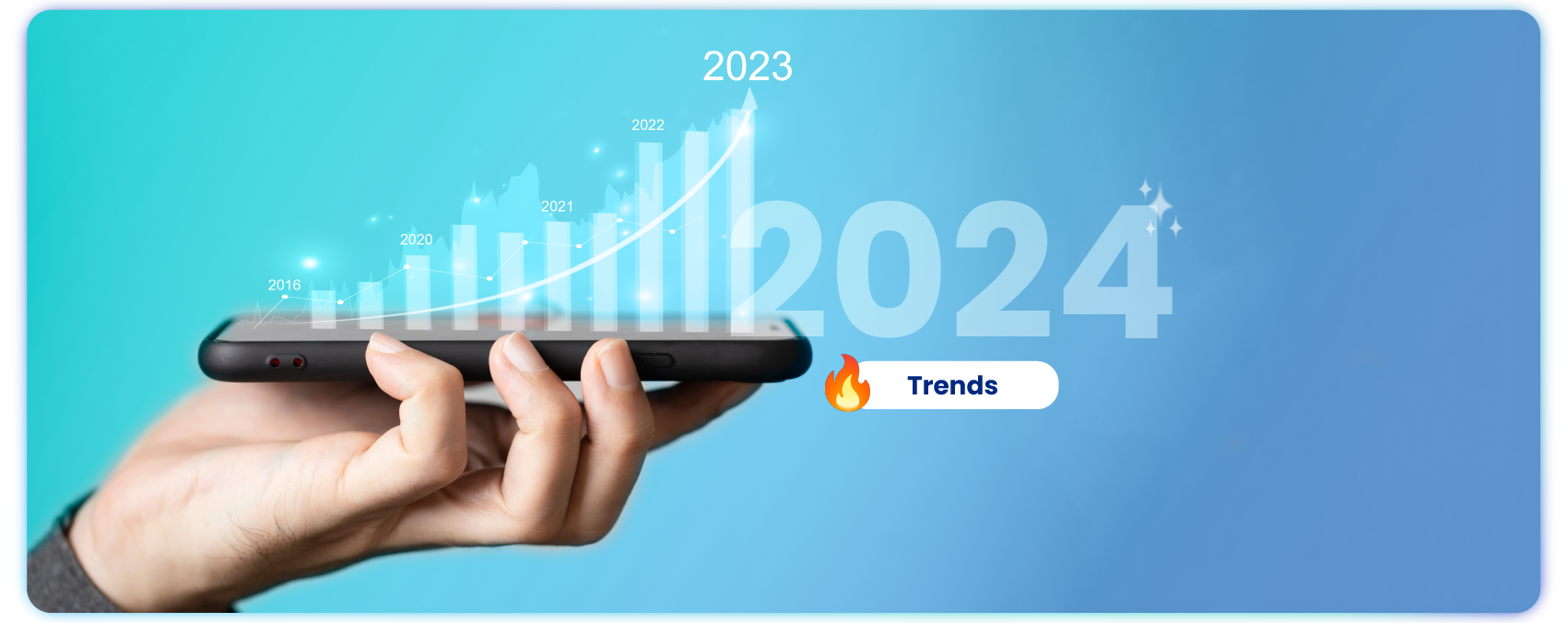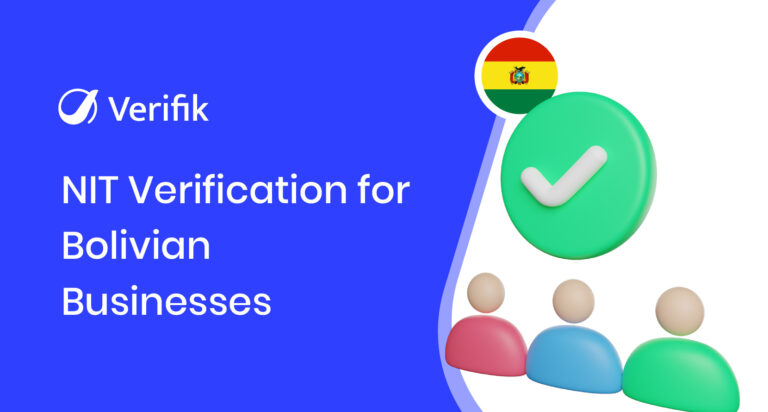In an increasingly connected world, the way companies verify and authenticate users online has become a fundamental process. As we approach 2024, it is essential to reflect on and understand the trends in digital identity.
In addition to exploring the technological tools that companies are considering investing in to protect their businesses in 2024. Verifying the authenticity of their users is crucial to prevent financial, reputational, and even legal issues arising from fraud.
Especially those associated with one of the most significant issues today: cybercrimes involving digital impersonation.
According to Latam Fintech Hub, in Latin America, cybercrimes cost $90 billion dollars annually. Faced with this significant figure, it is not surprising that companies are increasing their support for digital tools that enable quick and effective customer identity verification.
However, what are the predictions and trends in digital identity for the upcoming year?
Implementation of Advanced Biometric Technologies
It is expected that the use of facial recognition as the primary method of authentication will significantly increase in the coming year. This prediction foresees a significant shift towards greater adoption of advanced biometric technologies, positioning facial recognition as a leader in digital authentication.
According to Statista, 53% of professionals in large companies agree that ‘biometrics will be a key factor in strengthening digital identity”
Particularly, companies in the financial sector, as they have increased their digital access in the past year, have faced cybersecurity challenges and, consequently, opportunities for fraudsters.
Learn more about Biometric Validation: Security in Digital Transactions.
And just as cybersecurity issues increase, so does the global pressure due to constant financial losses from identity theft fraud. Therefore, many financial institutions are seeking to replace obsolete methods with advanced technologies, such as facial biometric verification.
This sophisticated method promises robust security and a seamless user experience, eliminating the need for passwords and streamlining the verification process. This change improves not only the customer experience but is also crucial for reducing risks, complying with regulations such as KYC and AML, and enhancing the online banking customer experience.
Increase in Passwordless Verification
We anticipate a significant increase in the adoption of passwordless authentication methods in the coming year. This shift is a response to the growing need to enhance security and user experience in the digital world.
In this context, one-time passwords (OTPs), biometrics, and multifactor authentication emerge as leaders in this movement, providing more secure and effective alternatives to conventional passwords.
Learn more about OTP and traditional passwords. Which one is safer
The implementation of passwordless systems not only enhances security but also makes it easier to manage your accounts. This method is an example of an evolution towards more sophisticated verification methods, fitting the current demands of an ever-changing digital environment.
Decentralized Identity in Developing Countries
It is expected that digital identity will become a significant solution for developing countries lacking legal documents.
“As WalkFree asserts, ‘It is estimated that approximately 850 million people worldwide lack identification.'”
What makes identity verification processes challenging, limiting access to bank accounts, jobs, education, and more. Even more concerning, it increases the likelihood of identity theft or cybercrimes.
Therefore, decentralized digital identity programs will enable individuals to store and share their documents reliably. This improves security against identity theft and fraud in general.
Increase in Corporate Data Leaks Due to AI
Not only will we witness an increase in the adoption of technologies combating cyberattacks, but also an evolution in the sophistication of such attacks. The progress of artificial intelligence redefines the landscape, presenting new challenges and opportunities in the realm of digital security.
A significant rise is expected in the quality and volume of AI-generated cyberattacks. In response to this evolution, companies will face the challenge of finding alternative and more reliable methods to authenticate and verify users on their platforms.
Protect Your Business in 2024
Undoubtedly, technology will take center stage in the upcoming year. However, in a rapidly evolving digital landscape, both businesses and users are aware of the importance of staying abreast of emerging trends in digital identity.
Therefore, digital businesses are exploring new ways of personalization and adaptation to individual user preferences, aiming to provide more secure and tailored online experiences.
This evolution reflects not only the need for authentication but also the desire to create more trustworthy digital environments tailored to the specific needs of each user.
In this context, Verifik emerges as a comprehensive solution with its user verification and authentication toolkit. Technologies that will be essential to follow the predictions and trends in digital identity in 2024.
By optimizing costs and business processes, Verifik ensures that your company is secure, protected against fraud, and legal penalties, with innovative technologies and a robust toolkit.
With Verifik, your company will be ready to face the future of digital identity with confidence and security. Have you explored our identity verification toolkit? Learn more about Verifik here or contact us to find the best solution for your business. Creating secure digital ecosystems is possible with Verifik.co
What is smartENROLL, and how does it help my business?
smartENROLL is Verifik’s comprehensive user onboarding solution that uses advanced identity verification technologies, such as facial recognition, liveness detection, and document scanning. It simplifies the onboarding process by automating tasks, validating data against local and international sources, and ensuring compliance with KYC/AML regulations. With its Passive Facial Liveness architecture, smartENROLL detects presentation attacks using just the same single-image selfie, reducing abandonment rates, preventing identity theft while enhancing user experience. It’s ideal for businesses in any industry looking to onboard users securely and efficiently.
How does smartACCESS improve platform security?
smartACCESS is a password-free login solution that combines Biometric Scanning and one-time passcode (OTP) technology to provide secure and seamless access to your platforms. It verifies facial features in real-time to prevent impersonation and deepfakes, ensuring only authorized users gain entry. By eliminating passwords, smartACCESS reduces the risk of data breaches and simplifies the login process, saving time for both users and businesses. You can customize login options (email, phone, or biometric) to suit your needs.
What is DataBase Screening, and why is it important?
DataBase Screening is Verifik’s service for validating user information against trusted local and international databases, such as Interpol, RUES, SIMIT, and government registries (e.g., CNPJ in Brazil, CUIT in Argentina). It helps businesses verify identities, check for criminal records, and ensure compliance with regulatory requirements. This service is critical for preventing fraud, improving database quality, and maintaining trust in industries like finance, events, and e-commerce.
How does smartENROLL support regulatory compliance?
smartENROLL is designed to help businesses meet legal and regulatory requirements, such as Know Your Customer (KYC) and Anti-Money Laundering (AML) standards. It validates user identities through biometric checks, document scanning, and data verification against multiple sources. By automating these processes, smartENROLL reduces manual errors and ensures your business stays compliant with industry regulations while protecting against fraud.
Can smartACCESS and smartENROLL be customized for my brand?
Yes, both offer advanced customization options. You can adapt the design by modifying colors, text, and messages in the interface and communications to align with your brand’s identity. Additionally, you can enable login options like email, phone, or facial recognition to suit your platform’s needs, ensuring a consistent and secure user experience.
What industries benefit from Verifik’s DataBase Screening?
DataBase Screening is valuable for industries requiring high levels of trust and compliance, including financial services, event management, e-commerce, and healthcare. For example, customers use us to screen people people or even vehicles, all done throught an API integration. This ensures secure operations and regulatory adherence across sectors.
How does smartENROLL prevent fraud during onboarding?
smartENROLL uses a combination of liveness detection, facial recognition, and document verification to ensure the authenticity of users. Additionally, it cross-references user data with trusted databases to detect identity theft or fraudulent documents, providing robust fraud prevention.
How does DataBase Screening integrate with other Verifik products?
DataBase Screening works seamlessly with smartENROLL and smartACCESS to provide end-to-end identity verification. For example, during onboarding with smartENROLL, govenment IDs data is extracted and cross checked with government or criminal records.












